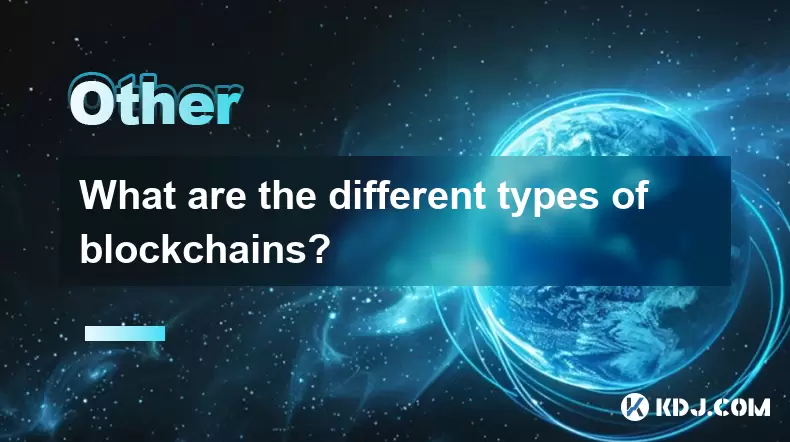-
 Bitcoin
Bitcoin $112400
-1.07% -
 Ethereum
Ethereum $3409
-3.27% -
 XRP
XRP $2.784
-6.60% -
 Tether USDt
Tether USDt $0.9997
-0.03% -
 BNB
BNB $739.3
-2.09% -
 Solana
Solana $158.0
-2.90% -
 USDC
USDC $0.9998
-0.02% -
 TRON
TRON $0.3213
-0.94% -
 Dogecoin
Dogecoin $0.1929
-5.01% -
 Cardano
Cardano $0.6974
-2.82% -
 Hyperliquid
Hyperliquid $36.69
-2.31% -
 Sui
Sui $3.327
-4.80% -
 Stellar
Stellar $0.3672
-5.18% -
 Chainlink
Chainlink $15.65
-3.07% -
 Bitcoin Cash
Bitcoin Cash $525.0
-1.68% -
 Hedera
Hedera $0.2291
-6.00% -
 Avalanche
Avalanche $20.91
-2.96% -
 Ethena USDe
Ethena USDe $1.000
0.00% -
 Toncoin
Toncoin $3.520
-1.12% -
 UNUS SED LEO
UNUS SED LEO $8.968
0.14% -
 Litecoin
Litecoin $105.7
0.26% -
 Shiba Inu
Shiba Inu $0.00001181
-1.79% -
 Polkadot
Polkadot $3.492
-2.08% -
 Uniswap
Uniswap $8.800
-3.10% -
 Dai
Dai $0.9999
-0.01% -
 Monero
Monero $289.9
-3.17% -
 Bitget Token
Bitget Token $4.243
-1.27% -
 Pepe
Pepe $0.00001006
-3.67% -
 Cronos
Cronos $0.1248
-5.68% -
 Aave
Aave $249.7
-2.50%
How to prevent tampering of blockchain traceability? Discussion on the security of blockchain traceability
Blockchain's security mechanisms like cryptographic hashing and consensus algorithms are crucial for preventing tampering in traceability, ensuring data integrity and trust.
Jun 09, 2025 at 06:36 am

Blockchain technology has become a cornerstone in the world of cryptocurrencies, offering a decentralized and secure method for recording transactions. One of the key applications of blockchain is traceability, which is vital for ensuring transparency and accountability in various sectors. However, the question of how to prevent tampering with blockchain traceability is crucial for maintaining its integrity and reliability. In this article, we will delve into the security aspects of blockchain traceability and explore strategies to prevent tampering.
Understanding Blockchain Traceability
Blockchain traceability refers to the ability to track the movement of assets or transactions through the blockchain network. This feature is particularly important in industries like supply chain management, where transparency and verification of goods' origin and journey are essential. The inherent nature of blockchain, with its distributed ledger and cryptographic security, makes it an ideal platform for traceability. However, ensuring that this traceability remains untampered is a complex task that requires a deep understanding of blockchain's security mechanisms.
The Importance of Preventing Tampering
Preventing tampering is critical for maintaining the trust and reliability of blockchain traceability. If the data on the blockchain can be altered, it undermines the entire purpose of using blockchain for traceability. Tampering can occur in various forms, including altering transaction data, modifying historical records, or manipulating the consensus mechanism. The consequences of such tampering can be severe, ranging from financial losses to loss of consumer trust and regulatory non-compliance.
Core Security Mechanisms of Blockchain
Blockchain's security is primarily based on several key mechanisms that work together to prevent tampering. Cryptographic hashing is one of the fundamental security features. Each block in the blockchain contains a hash of the previous block, creating a chain of blocks that is extremely difficult to alter. If any data in a block is changed, the hash of that block changes, which in turn changes all subsequent hashes, making the tampering evident.
Consensus algorithms also play a crucial role in preventing tampering. These algorithms ensure that all nodes on the network agree on the state of the blockchain. Popular consensus mechanisms like Proof of Work (PoW) and Proof of Stake (PoS) require significant computational power or stake, respectively, to validate transactions and add new blocks to the chain. This makes it economically and technically challenging for malicious actors to tamper with the blockchain.
Additional Security Measures for Traceability
While the core security mechanisms of blockchain provide a strong foundation, additional measures can be implemented to enhance the security of traceability. Immutable data storage is one such measure. By ensuring that once data is written to the blockchain, it cannot be altered, the integrity of traceability is maintained. This can be achieved through smart contracts that automatically enforce the rules of data entry and modification.
Multi-signature wallets are another effective tool for enhancing security. These wallets require multiple signatures to authorize a transaction, making it more difficult for a single malicious actor to tamper with traceability data. By requiring consensus among multiple parties, the risk of unauthorized changes is significantly reduced.
Monitoring and Auditing
Continuous monitoring and auditing are essential for detecting and preventing tampering in blockchain traceability. Blockchain analytics tools can be used to monitor the network for suspicious activities and anomalies. These tools can help identify patterns that may indicate tampering attempts, allowing for timely intervention.
Regular audits of the blockchain and its associated systems can also help in maintaining the integrity of traceability. Audits can verify that the blockchain is functioning as intended and that no unauthorized changes have been made. This can involve checking the hash integrity, reviewing transaction logs, and ensuring that consensus mechanisms are operating correctly.
Implementing Best Practices
To further prevent tampering, it is important to follow best practices in blockchain implementation and management. Regular software updates are crucial to patch any vulnerabilities that could be exploited by attackers. Keeping the blockchain software up to date ensures that the latest security features and fixes are in place.
User education and training are also vital. Ensuring that all users and stakeholders understand the importance of security and the potential risks of tampering can help in preventing accidental or intentional breaches. Training programs can cover topics such as secure key management, the importance of multi-signature wallets, and the role of consensus mechanisms in maintaining blockchain integrity.
Case Studies: Successful Prevention of Tampering
Examining real-world examples can provide valuable insights into how tampering can be prevented in blockchain traceability. Case Study 1: Supply Chain Management - A major company implemented a blockchain-based solution to track the journey of their products from manufacturer to consumer. By using a combination of cryptographic hashing, consensus algorithms, and multi-signature wallets, they were able to ensure that the data on the blockchain remained untampered. Regular audits and monitoring further reinforced the security of their traceability system.
Case Study 2: Financial Transactions - A financial institution used blockchain to record and track transactions. They employed immutable data storage and smart contracts to prevent any unauthorized changes to the transaction records. The use of blockchain analytics tools allowed them to detect and respond to any potential tampering attempts promptly.
FAQs
Q: Can blockchain traceability be completely tamper-proof?
A: While blockchain's security mechanisms make it extremely difficult to tamper with traceability data, no system is completely tamper-proof. However, by implementing additional security measures and following best practices, the risk of tampering can be minimized to a negligible level.
Q: How can small businesses benefit from secure blockchain traceability?
A: Small businesses can use blockchain traceability to enhance transparency and build trust with their customers. By ensuring the security of their traceability data, they can demonstrate the integrity of their products and processes, which can be a significant competitive advantage.
Q: What role do smart contracts play in preventing tampering?
A: Smart contracts can automate the enforcement of rules and conditions on the blockchain, ensuring that once data is entered, it cannot be altered without meeting specific criteria. This helps in maintaining the integrity of traceability data by preventing unauthorized modifications.
Q: Are there any regulatory requirements for blockchain traceability security?
A: Depending on the industry and jurisdiction, there may be specific regulatory requirements for ensuring the security of blockchain traceability. It is important for businesses to stay informed about these regulations and implement the necessary security measures to comply with them.
Disclaimer:info@kdj.com
The information provided is not trading advice. kdj.com does not assume any responsibility for any investments made based on the information provided in this article. Cryptocurrencies are highly volatile and it is highly recommended that you invest with caution after thorough research!
If you believe that the content used on this website infringes your copyright, please contact us immediately (info@kdj.com) and we will delete it promptly.
- BlockDAG, SEI, Ethena: Top Crypto Performers Under the Microscope
- 2025-08-03 10:50:16
- Bitcoin Blasts Past $119K: How Institutional Adoption and Macro Shifts Fuel the Fire
- 2025-08-03 10:55:16
- Crypto, Grok, and August: Decoding the Latest Trends and Insights
- 2025-08-03 11:10:16
- Crypto, Phishing, and Your Wallet: A New Yorker's Guide to Staying Safe
- 2025-08-03 10:30:16
- Troller Cat Meme Coin Presale Soars: A New King in the Crypto Jungle?
- 2025-08-03 10:30:16
- Grayscale, Altcoin Trust, and Mid-Cap Mania: What's the Deal?
- 2025-08-03 08:50:16
Related knowledge

What is the difference between on-chain and off-chain transactions?
Aug 02,2025 at 04:22pm
Understanding On-Chain TransactionsOn-chain transactions refer to digital asset transfers that are recorded directly on a blockchain ledger. These tra...

What is the double-spending problem and how does blockchain prevent it?
Aug 02,2025 at 01:07pm
Understanding the Double-Spending ProblemThe double-spending problem is a fundamental challenge in digital currency systems where the same digital tok...

What is the difference between a blockchain and a database?
Aug 01,2025 at 09:36pm
Understanding the Core Structure of a BlockchainA blockchain is a decentralized digital ledger that records data in a series of immutable blocks linke...

How does blockchain handle scalability?
Aug 02,2025 at 02:58pm
Understanding Blockchain Scalability ChallengesBlockchain scalability refers to a network's ability to handle an increasing volume of transactions wit...

What are the different types of blockchains?
Aug 03,2025 at 03:01am
Public Blockchains: Open and Decentralized NetworksPublic blockchains are the most widely recognized type of blockchain, characterized by their open a...

What is a hash in a blockchain?
Aug 02,2025 at 05:28am
Understanding the Concept of Hash in BlockchainA hash in the context of blockchain technology refers to a unique digital fingerprint generated by a cr...

What is the difference between on-chain and off-chain transactions?
Aug 02,2025 at 04:22pm
Understanding On-Chain TransactionsOn-chain transactions refer to digital asset transfers that are recorded directly on a blockchain ledger. These tra...

What is the double-spending problem and how does blockchain prevent it?
Aug 02,2025 at 01:07pm
Understanding the Double-Spending ProblemThe double-spending problem is a fundamental challenge in digital currency systems where the same digital tok...

What is the difference between a blockchain and a database?
Aug 01,2025 at 09:36pm
Understanding the Core Structure of a BlockchainA blockchain is a decentralized digital ledger that records data in a series of immutable blocks linke...

How does blockchain handle scalability?
Aug 02,2025 at 02:58pm
Understanding Blockchain Scalability ChallengesBlockchain scalability refers to a network's ability to handle an increasing volume of transactions wit...

What are the different types of blockchains?
Aug 03,2025 at 03:01am
Public Blockchains: Open and Decentralized NetworksPublic blockchains are the most widely recognized type of blockchain, characterized by their open a...

What is a hash in a blockchain?
Aug 02,2025 at 05:28am
Understanding the Concept of Hash in BlockchainA hash in the context of blockchain technology refers to a unique digital fingerprint generated by a cr...
See all articles

























































































